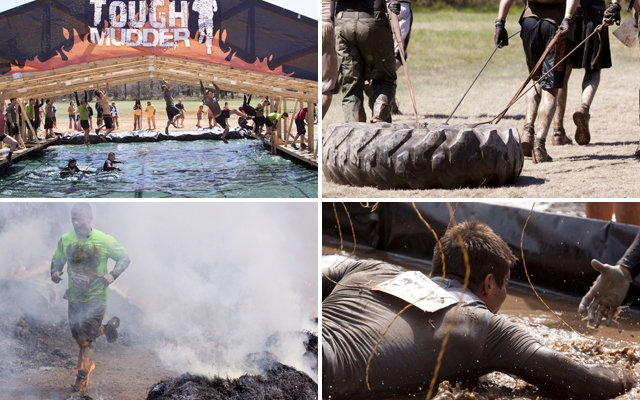The world of obstacle course racing has exploded—there’s Tough Mudder, The O Course Crucible, Warrior Dash, and Mud Hero, and that’s to name just a few. If you’re thinking of registering for one. you’d better be prepared for it—on average22 percent of people don’t finish a Tough Mudder, for example. Don’t want to be part of that group of non-finishers? We checked in with fitness instructor Zack Schieck for his top tips on getting ready for one of these races.
Do hill training
“A lot of people go out and do a lot of cardio—maybe they run marathons or do triathlons, for example—but with those races you know what to expect. You’ll have some inclines, some declines, and you’ll mostly be on pavement,” says Schieck. But with these obstacle course races, they’re often set up in ski resorts, he notes, which is why hill training is essential.
Find a medium to large hill (“one that looks kind of intimidating,” he says) and do three to five hill sprints and see how you feel cardio-wise. Schieck says from there work up to 10 to 15 hill sprints. He’s particularly fond of this workout as it’s free for anyone to do, plus “running hills force you to run properly because of the way your elbows drive back behind you and how you have to lift your knees for the incline,” he says.
Develop pull and grip strength
“I don’t expect girls or guys to be able to start blasting pull-ups right away,” says Schieck, but notes that there are often monkey bars, rings and walls to climb so developing your pull strength and dexterity in terms of grip strength is essential.
One exercise he recommends in an inverted pull-up: Lay down facing up underneath a bar of some sort, and pull yourself up towards bar, with feet and legs still on the ground. “So you’re using half or up to 75 percent of your body weight,” he says. You’re looking to develop your grip and upper body strength so you become able to pull yourself onto something and get onto it, he explains.
Build a community
The last thing Schieck recommends has nothing to do with an actual type of fitness exercise, but rather with motivation and that has to do with building a supportive community around yourself with the same goal of completing an obstacle course race. Ask at your gym or look for postings for anyone who’s trying to pull together a group of people with the same goal; you can also look for prep courses in your area (Schieck runs one in Toronto for the O Course Crucible). Schieck says this step is particularly important as it’ll play a role in your race itself. “When you’ll be facing a 12-foot wall and you’re 5’6”, you’d better hope that your friend is there to help hoist you up a bit or that they get up and help you after they do,” he says. “That camaraderie and team works is really what gets people through these courses,” he says.












